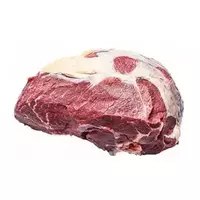Beef cut

It so happened that, unfortunately, in our country historically pure meat breeds of cows were either dairy or milk-meat (at best). In addition, they deliberately did not engage in fermentation and aging of meat so that it acquired a bright taste and became tender.
And only today some breeders and farmers began to do this, for example, in the Lipetsk region, where Australian breeds of meat gobies are bred, and elite marble beef is also harvested, which is ideal for cooking steaks. Most domestic beef, meanwhile, is good for stews or broths.
As for meat imported into Russia, pitfalls cannot be avoided here either. But in general, in order for any meat dish as a result of the culinary work to be tasty and meet the expectations of eaters, you need to be able to choose the right meat. That is why for each individual part of the carcass there is its own purpose and special name. We invite you to stop and understand in more detail such a meat product as beef cut.
So, by beef oguz is meant the femoral part of the carcass of the animal, which is located down from the thick fillet and costretz. As is known, beef slaw is classified as second-class meat, which is due to the fact that throughout the life of the animal this part was most involved and carried heavy loads.
Nevertheless, in culinary affairs, beef oguzok is valued quite highly. It is rightly considered the most suitable and most profitable part of beef carcass for making pure strong broth. Beef ogoz is quite fleshy, its flesh is juicy and soft.
In addition, excellent stew and boiled meat can be easily prepared from beef oguz. Many hostesses rightfully argue that it is beef oguz that is great for round rissoles, cutlets, as well as for various soups and other first dishes. When preparing chopped meat from this part, you need to beat it off well or twist it a couple of times through a meat grinder.
When choosing a beef cut, the chef is recommended to always pay attention to the surface fat, which should lie in a thick layer and differ in a pleasant milk color. The grayish hue indicates the low value and stale of this part of the carcass. It is also worth noting that for the preparation of broths, you should not buy beef fat weighing less than 2-3 kilograms - a small piece closer to the tail contains more fat than meat, while the rest is occupied by bone.
beef cut 156 kCal
Energy value of beef fat (Ratio of proteins, fats, carbohydrates - ju):
Proteins: 20.16 (~ 81 kCal)
Fats: 7.73 g (~ 70 kCal)
Carbohydrates: 0 g (~ 0 kCal)
Energy ratio (b | y): 52% | 45% | 0%
 Español
Español Français
Français Português
Português Русский
Русский 简体中文
简体中文 繁體中文
繁體中文 日本語
日本語 한국어
한국어 العربية
العربية Türkçe
Türkçe Қазақ
Қазақ Deutsch
Deutsch Italiano
Italiano Українська
Українська
